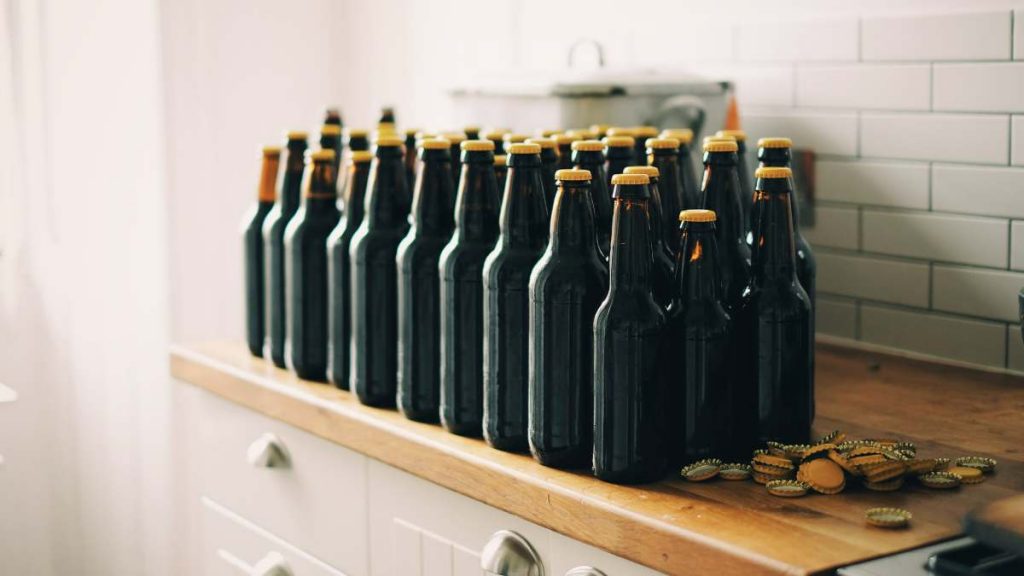Brewing your beer at home is a brilliant way to experiment with flavours and save money. Not only does homebrewing help you boost your monthly budget, it’s also an interesting hobby that gives you the opportunity to make great presents for family and friends.
 Why brew your own beer?
Why brew your own beer?
Bring back the days of the 25p pint. In the UK, beer up to 2.8% alcohol by volume (ABV) is taxed at 8.42 pence a litre. A litre of beer up to 7.5% gets taxed at 19.08 pence. More alcoholic beers, above 7.5%, get 24.77 pence added to every litre. This add-on means you pay 54p Beer Duty tax on a typical pint. Though it may not sound like much, it soon tots up when you buy a beer box for a party or go on a night out!
Not only can brewing your beer save you money, but it’s also one of the most straightforward and quickest fermented drinks to produce. Just stick your ingredients in any container or barrel, ferment it, and you’ll have tasty homebrew within a matter of days!
Homebrewing also gives you scope to experiment. Lager or pilsner? Chocolate stout? Why not toss a banana or two in there? The choice is truly yours.
How do I brew my own beer?
Brewing your beer generally consists of four primary stages: preparing, brewing, fermenting and bottling or kegging. This means choosing, gathering and cleaning your equipment, boiling your ingredients, adding your yeast, and transferring your beer to bottles or a keg.
What will I need for brewing beer?
Yes, you’ll need to assemble and thoroughly clean your brewing equipment before starting. You’ll need a 5-gallon brewing kettle, fermenter and air lock, some sanitiser, an auto-siphon, and a stirring spoon for a basic beer. And of course, you’ll need your ingredients, too.
Why not look into a complete beer dispenser set if this sounds too complicated? These kits have everything you need to brew beer.
Once everything’s in place, be sure to sanitise! Everything that will come into contact with your beer after it’s boiled needs to be squeaky clean.
How do I make the wort?
First, fill your brew kettle (or soup pot) with 2.5 gallons of water. Using a grain bag, steep your grains in this water for 20 minutes or until the water reaches 170 degrees. When you’ve reached this point, remove the grains. Allow the water to drip from the bag, but don’t squeeze it, as the tannins may impart an unwanted flavour to your beer.
Keep the heat on under your brew kettle until the water comes to a rolling boil. Then, remove it from the heat and add malt extracts. When the extract is dissolved, bring the mixture back to a boil. It’s now time to add your hops – check your specific recipe to find out exactly what to do here.
You have now made wort, or sugar water! This wort needs to be cooled as quickly as possible. Place your pot in a sink full of ice or use a wort chiller device. You could even clear some space in the freezer.
How do I ferment it?
After sanitising your supplies, pour your cooled wort into your fermenter. Add more water until you have 5 gallons. Give the mixture oxygen by splashing it with a spoon or ladle. Now pour in the yeast. Then, add your fermentation air lock and store your beer in a cool dark place. Two weeks later, you’ll have a delicious homebrew beer!
How do I store it?
When fermentation is complete, it’s time to bottle your beer or transfer it to a keg or dispenser.
First, clean everything! Use a bottle brush to scrub your bottles, and make sure everything is sterilised. Then boil your priming sugar in 16 ounces of water. Add it directly to a bottling bucket when cool.
Now, siphon your beer from your fermenter into your bottling bucket. Try to leave the sediment in your fermenter. Attach your hose and bottle filler to your bottling bucket, then push the bottle filler to the bottom of your bottle. Cap the bottles and store them.
If you are storing your beer another way, refer to the manufacturer’s instructions.

